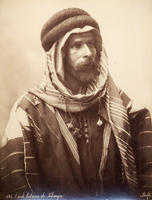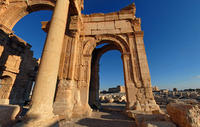You are in: Middle East -> Syria -> Site of Palmyra, and traditional search or Image Gallery will yield results of this site only
Site of Palmyra
| Site number: | 23 |
|
| Type of site: | Heritage in danger | |
| Date: | 1-2nd-century | |
| Date of Inscription: | 1980 | |
| Location: | Middle East, Syrian Arab Republic, Province of Homs | |
Up to 75 images are shown here. Click on each for more details or on Image Gallery for more images.
| Description: | Palmyra is an oasis in the Syrian Desert, lying north-east of Damascus. It holds the colossal remains of a great city that was once the ancient world’s most significant cultural centre. Being positioned at the crossroads of several civilizations, the art and architecture of Palmyra wed Graeco-Roman techniques with local traditions and Persian influences in the 1st to the 2nd century. --WHMNet paraphrase from the description at WHC Site, where additional information is available. For 360 degree imaging of this site, click here. | |
| Palmyra (Arabic: تدمر) was in the ancient times an important city of central Syria, located in an oasis 215 km northeast of Damascus and 120 km southwest of the Euphrates. It has long been a vital caravan city for travellers crossing the Syrian desert and was known as the Bride of the Desert. The earliest documented mention of the city by its pre-Semitic name Tadmor, Tadmur or Tudmur, is recorded in Babylonian tablets found in Mari. Though the ancient site fell into disuse after the 16th century, it is still known as Tadmor (in Arabic تدمر) and there is a small newer settlement next to the ruins of the same name. --Wikipedia. Text is available under the Creative Commons Attribution-ShareAlike License. For 360 degree imaging of this site, click here. | ||
| Source: | http://whc.unesco.org/en/list/23 | |
| Source2: | http://whc.unesco.org/en/list/23/video | |
| Reference: | 1. UNESCO World Heritage Center, Site Page. | |












































































